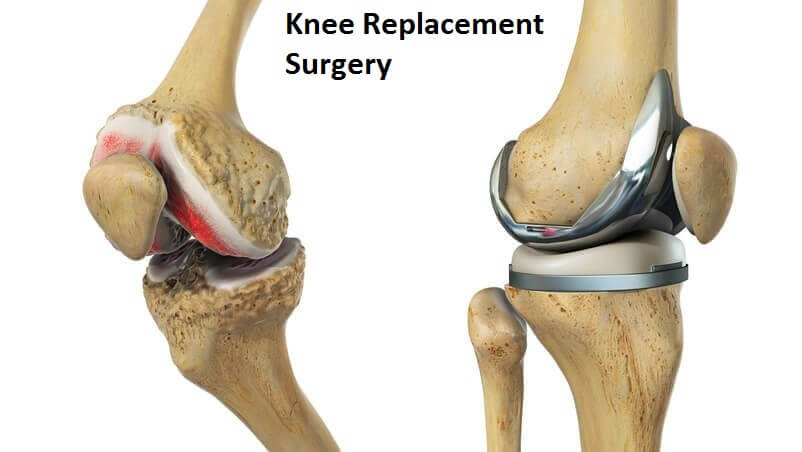Table of Contents
About knee replacement procedure
According to the best knee replacement surgeon in Gurgaon, knee replacement surgery, be it partial or complex is considered to be a complicated surgical treatment. This procedure requires the orthopedic surgeon to have the diseased portion in the bone region to be replaced with an artificial new knee implant also called a prosthesis. A synthetic knee is created by the surgeon during the procedure. It is achieved by crafting one particular component one by one and then remaking an artificial knee joint.

When will knee replacement be necessary?
It will be required:
- If the person suffers from knee arthritis for a prolonged time and with extreme severity.
- Pain does not permit the person to carry out his/her regular duties and activities.
- Facing extreme difficulty and pain when squatting, kneeling and walking.
- The symptoms faced have not improved even after availing of other types of conventional treatments.
- A knee replacement surgery that is carried out by expert professionals will be able to restore fully to partial mobility in patients. In some medical situations, this is the last step that will be prescribed by your orthopedic surgeon to help you get a second chance at life and not be limited by debilitating disability. </p>
But it becomes crucial for each and every patient who has been advised to undergo this procedure to know it in detail and prepare themselves mentally and cope with the same for better recuperation.
Steps involved knee replacement surgical procedure
The steps are given below:
- Anesthesia: The patient is provided with spinal or general anaesthesia by the anesthetist to ensure falling asleep throughout the procedure to ensure reduced pain and to get relief.
- Creating incision on the knee: Incision is created on the knee’s anterior portion to allow easy access to the knee cap or patella. Typically, the incision created is around 8” to 10” in length during conventional knee replacement surgery. If the surgical procedure is undertaken is performed with a minimally invasive approach, then the incision created is just 4” to 6” in length.
- Turning knee cap: Once the incision is made on the knee, it is the patella that first gets exposed. As access is gained by the surgeon to the patella, it is rotated outwards, thereby providing adequate room for performing the procedure.
- Thighbone preparation: The thighbone is resurfaced. Medically termed as femur by the orthopaedic surgeon. Once the knee joint gets exposed, specialized instruments are used for measuring the bone as well as to cut cartilage and damaged bone from the femur base with great precision. Then, the cut end gets resurfaced to ensure appropriate filing of femoral components in the prosthesis.
- Fixing of femoral component: On resurface of the femur, the femoral component created from plastic or metal to the base is appended by the surgeon and fixed in place with bone cement.
- Shinbone preparation: Shinbone is also termed as Tibia, and is regarded as the next one that gets resurfaced. Libia’s upper end is made free from the damaged cartilage and bone and then reshaped to fit the tibial component of the artificial knee prosthesis.
- Fixing of tibial component: Also known as a tibial tray, the tibial component is fixed to the labia’s upper resurface portion and is joined with bone cement. On fixing of the tray, a polyethylene is inserted for convening between tibial and femoral components which in turn acts as a buffer to offer adequate support to the body, when flexing and bending the knee.
- Patella re-tuning: Patella’s lower surface is smoothened out and fixed using the plastic patellar component to certify proper fit along with other parts of the implant. The plastic component if necessary gets cemented to the bone.
During the procedure, the surgeon double-checks the implant to ensure that it is properly aligned, is working as expected to be, has the correct positioning and sizing. This is achieved by flexing and bending the knee. Once the above aspects are confirmed, the incision is sutured and dressed carefully. The total time for the entire surgical procedure to complete is around two hours.
Life after surgery
The surgical procedure conducted by the best knee replacement surgeon in Gurgaon is sure to offer excellent, long-lasting results. The patient can start walking and moving the very next day of undergoing the procedure. But there will be required 3 to 4 days of hospital stay. The pain-free knee can be enjoyed after complete recovery. Therefore, getting to know the above details is sure to help the patient to have peace of mind and be relaxed completely to enjoy life after the procedure.